Samsung Galaxy Z Fold 3 vs Microsoft Surface Duo: two different foldable ideas
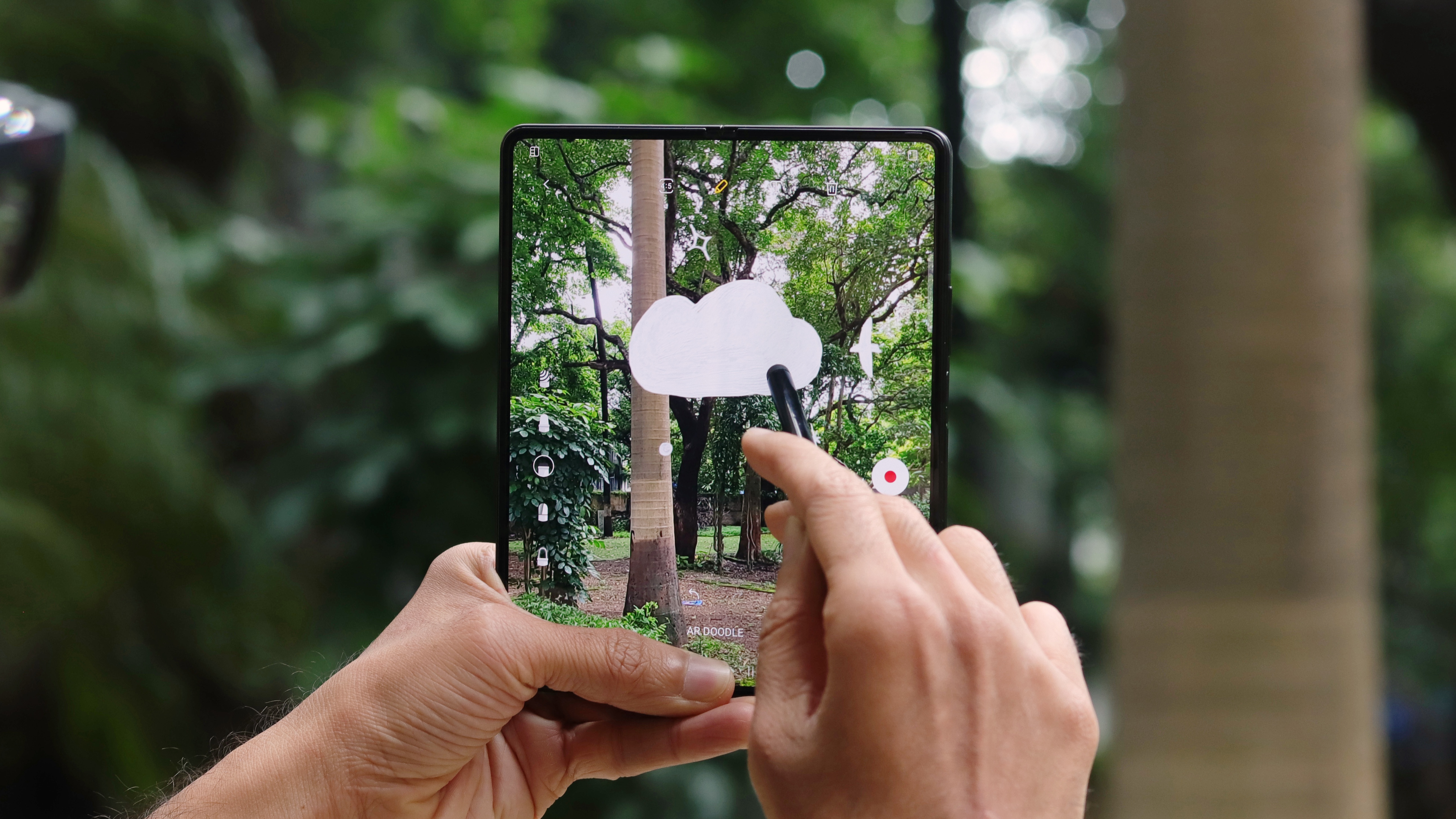
Samsung has come to dominate the fledgling foldable phone format, with the Samsung Galaxy Z Fold 3 representing one of two third-generation foldable devices from the brand.
But it isn’t the only hinged phablet in town. Last year, we received the Microsoft Surface Duo as a bold new attempt at smartphone legitimacy from the Windows maker.
Microsoft has just announced the Surface Duo 2, but that's not out yet so here we're focusing on the first-gen model. So how do these two smart hybrids compare? Does Samsung’s iterative headstart show in the final reckoning?
Samsung Galaxy Z Fold3 vs Microsoft Surface Duo price and availability
The Samsung Galaxy Z Fold 3 hit shops on August 27, 2021 in the US and UK, and September 10 in Australia. Prices start at $1,799 / £1,599 / AU$2,499 for the 256GB model, while $1,899 / £1,699 / AU$2,649 gets you 512GB of storage.
The Surface Duo was made available on September 10, 2020 in the US and February 2021 in the UK. Prices started at $1,399 / £1,350 (about AU$1,930) for 128GB of internal storage, moving up to $1,499 / £1,449 (about AU$2,080) for 256GB.
That’s already a fair bit cheaper than the Galaxy Z Fold3, and we’ve only seen that Surface Duo price drop since launch. In fact, we’ve seen the device go for as low as $700 / £680 for the 128GB version and $750 / £730 for the 256GB variant.
Whatever happens over the coming sections, then (SPOILER ALERT: it really is quite a one-sided battle), remember that the Microsoft Surface Duo can be had for less than half the money of the Samsung Galaxy Z Fold3.
Design

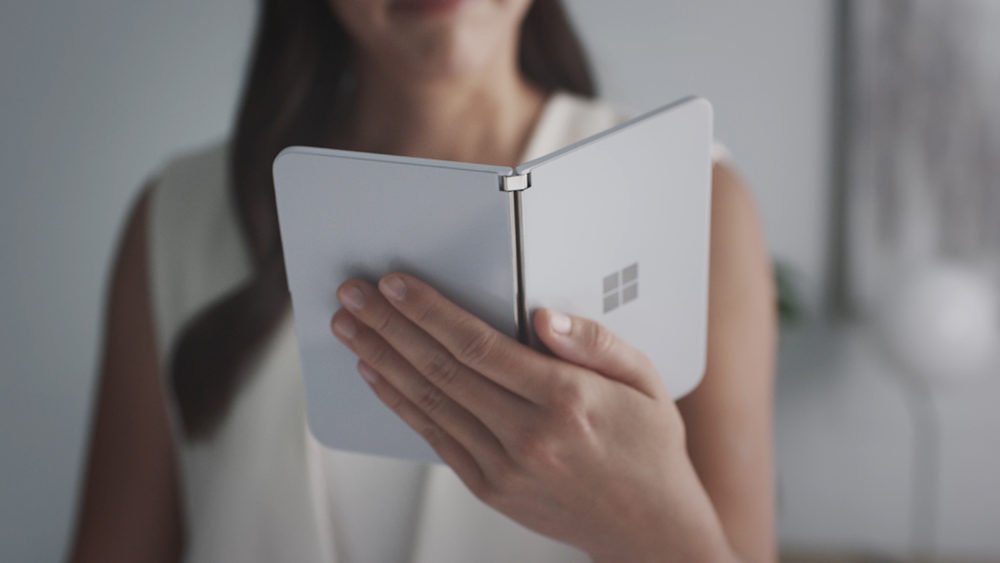
These are two of the most head-turning smartphones on the market, but in terms of pure design, the Galaxy Z Fold 3 wins out. It doesn’t get everything its own way, though.
At 158.2 x 128.1 x 6.4mm unfurled, the Galaxy Z Fold 3 is a much squarer and thicker device than the 186.9 x 145.2 x 4.8mm Surface Duo. It’s also a fair bit heavier at 271g versus 250g.
That thickness really makes all the difference when both devices are folded. While the Microsoft Surface Duo still resembles a regular phone at less than 10mm thick, the Galaxy Z Fold 3 is about 50% thicker.
Microsoft’s hinge system is also more subtle and pretty, with a minimal gap and an awesome feel. It’s remarkably solid despite its daintiness, too. Samsung’s third-gen hinge is more of a triumph of iteration, with a rather utilitarian approach.
It won’t open a full 360-degrees in the way of Microsoft’s hinge. Samsung’s device can still be used in this ‘closed’ position, but only by implementing a second external display, which feels like an altogether less elegant solution.
Microsoft’s foldable tablet is slightly sexier, then, but it isn’t quite as rugged as the Samsung. It doesn’t have the Galaxy Z Fold 3’s IPX8 waterproof rating, and its front and rear are coated in Gorilla Glass 5 rather than the Samsung’s superior Gorilla Glass Victus.
Display
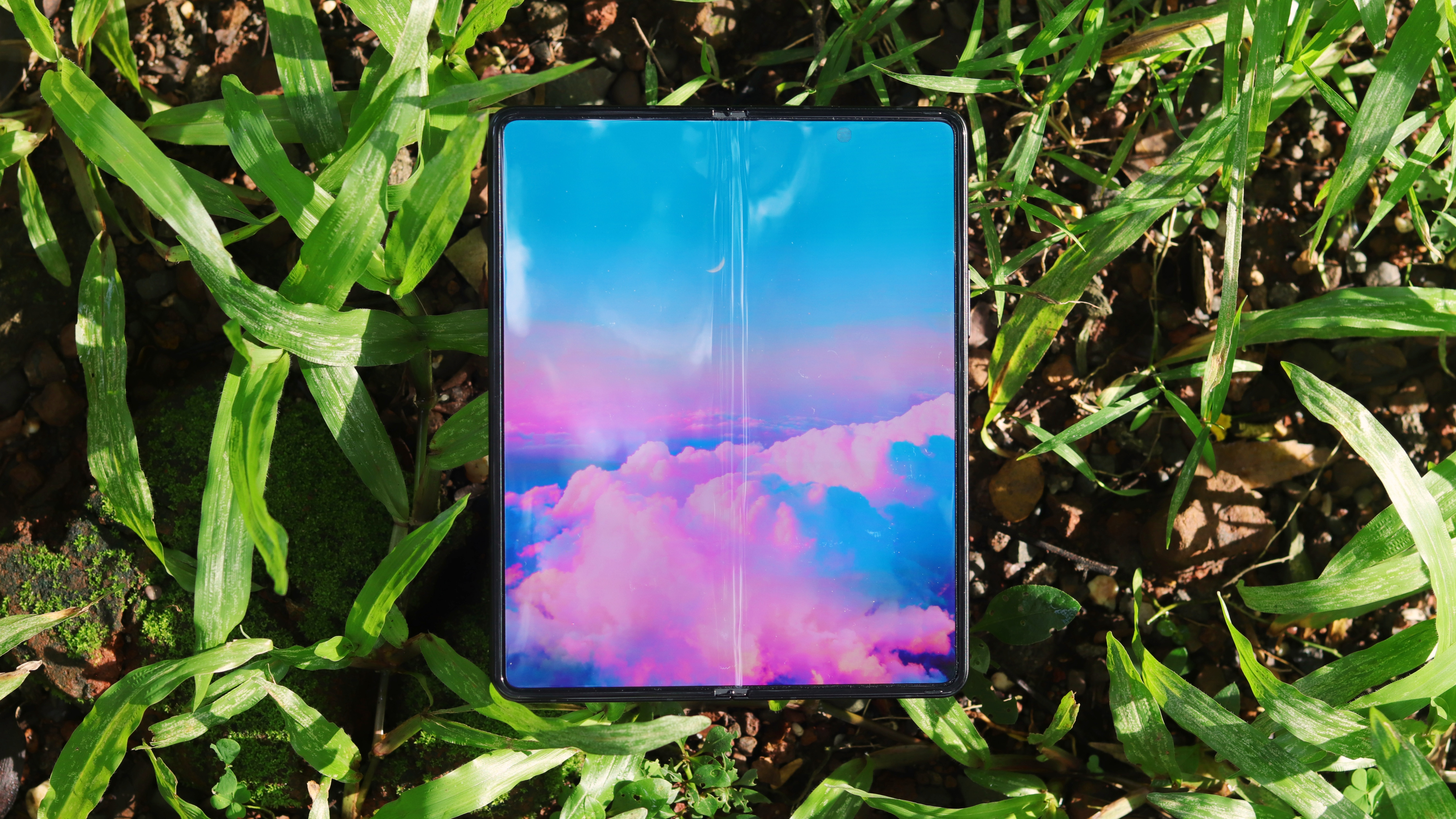
Both phones employ two displays, although their implementation is very different.
While Samsung uses one large foldable 7.6-inch AMOLED screen, and one 6.2-inch AMOLED Cover Display, Microsoft splits its 8.1-inch AMOLED into two distinct halves – hence the Duo name. These can serve as a single display, but the point is to have clear separation for the Duo’s split-screen functions.
Samsung’s main screen is undoubtedly more of a feat of engineering. While you’ll notice a ridge running down the middle, it’s less obvious than Microsoft’s clear separating bezel. Indeed, in general we didn’t find it desirable to run cross-screen media and the like on the Surface Duo, whereas it’s quite feasible on the Galaxy.
At 1800 x 2700, the Microsoft screen is sharper than its 1768 x 2208 Samsung equivalent, but we’re only talking a small difference in pixel density: 401ppi vs 374ppi.
Both of the Samsung Galaxy Z Fold 3’s screens benefit from a speedy 120Hz refresh rate, too. Microsoft’s device only hits a standard 60Hz.
All in all, despite an ostensibly similar form factor, these are two very different approaches to display technology. We’d have to give Samsung the nod on raw quality and media readiness, but there are one or two ways in which the Microsoft Surface Duo’s dual screens prove more impressive.
Cameras
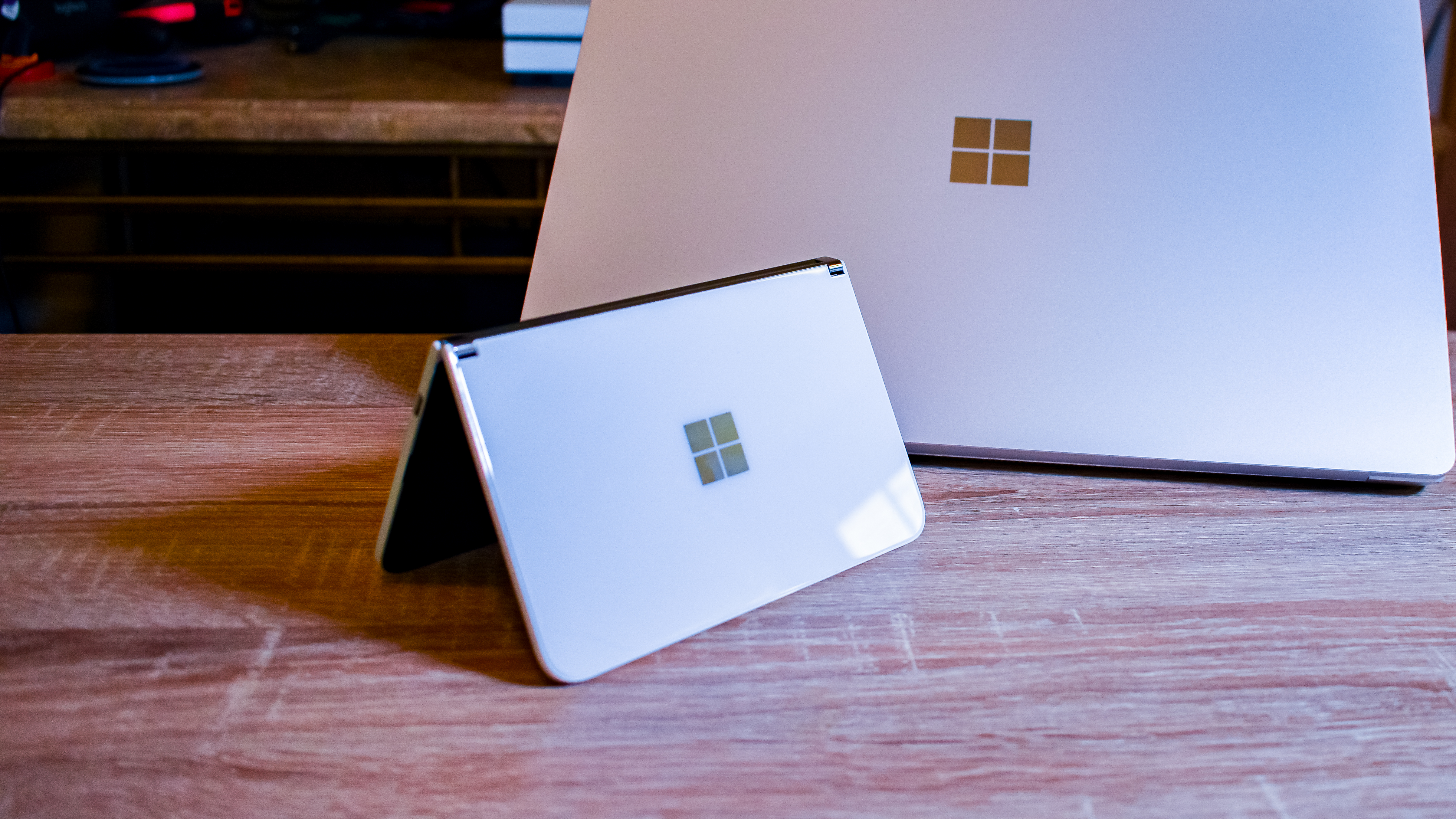
For two ostensibly premium, forward-thinking devices, the camera experience is universally disappointing. Still, the Microsoft Surface Duo’s camera is markedly more disappointing than that of the Samsung Galaxy Z Fold 3.
The latter’s triple 12-megapixel camera system isn’t bad at all. It just doesn’t represent any real progress from the Galaxy Z Fold 2, and it fails to match up to the excellent Samsung Galaxy S21 Ultra camera that wowed us earlier in the year.
It’s still led by a fairly large and capable 1/1.76in 12-megapixel wide sensor, though, which can capture decent images. And that’s still backed up by a 12-megapixel f/2.4 telephoto sensor with a 2X optical zoom.
By contrast, Microsoft’s solitary 11-megapixel f/2.0 sensor is decidedly lacking. We described it as “easily the weakest point of the device” in our review, although it does feature a halfway decent Portrait mode, and it can still record 4K 60fps video, just like the Samsung.
The Duo’s overworked camera has to pull double-duty as a selfie camera, too, and on that front at least it’s a qualified success. Samsung has opted for a dedicated under-display 4-megapixel solution, which is clever. When you come down to the business of shooting selfies, however, it turns out poor results.
Still, Samsung also includes a separate 10-megapixel selfie camera on the Cover Display, which is a little better.
Specs and performance
There’s a full year between these two products, so you’d expect the Samsung Galaxy Z Fold 3 to be a generation ahead in terms of performance. In fact, it’s actually two generations ahead of its Microsoft rival.
While the Galaxy Z Fold 3 runs on the Snapdragon 888, like most other current flagship phones, the Microsoft Surface Duo runs on the creaky Snapdragon 855.
Even at the time of launch, we commented that this should really have been the Snapdragon 865, which was the Snapdragon 888’s immediate predecessor. Time hasn’t changed our mind one bit.
Samsung also packs its foldable with double the RAM of its rival: 12GB as opposed to 6GB. In devices such as these, which are built for juggling and stacking multiple applications, that’s a notable advantage.
You also get more generous storage with the Samsung, with a choice of either 256GB or 512GB. Microsoft only offers 128GB or 256GB. Neither packs a microSD slot, however.
One other difference that hasn’t helped the Microsoft Surface Duo age well is the lack of 5G connectivity. Needless to say, the Galaxy Z Fold 3 supports this next-generation – or rather current-generation – network connectivity.
Both foldables support their manufacturers’ advanced styluses: the S Pen for Samsung, the Surface Pen for Microsoft. Both are great, but you’ll have to buy them separately, which is a shame all-round.
Samsung and Microsoft both include their own custom software to take advantage of these styluses, as well as those expanded screens. Both are derived from Android, although the Samsung utilizes Android 11, while the Microsoft Surface Duo is still stuck on Android 10 at the time of writing.
Battery
You wouldn’t choose either of these devices if stamina was a primary concern.
The Galaxy Z Fold 3 packs in a 4400mAh battery – less than even the Samsung Galaxy S21 Plus – while the Microsoft Surface Duo includes an even smaller 3577mAh cell.
This isn’t very promising from the get-go. However, while neither device inspires confidence in daily use, only the Samsung proved a particular disappointment in this regard.
We found that the Galaxy Z Fold 3 would rarely get through a full day if we hit its 5G and camera hard. Conversely, the Microsoft Surface Duo managed to get us through a full day consistently across the two weeks of our test period.
Of course, much of this performance is a result of the fact that the Surface Duo doesn’t include modern energy-sapping features such as 5G and a 120Hz display. We’d much rather have the option to toggle these functions on and off, as is the case with the Galaxy Z Fold 3.
On the charging front, Samsung wins comfortably – but it isn’t a particularly impressive effort in either case.
You get 25W wired charging support with the Galaxy Z Fold 3, and a mere 18W with the Microsoft Surface Duo. With more traditional rivals offering 65W and 67W charging, neither is a great offering from either manufacturer.
Still, at least Samsung offers 11W wireless charging. Microsoft doesn’t offer any such thing, despite coating its sleek foldable in glass.
Takeaway
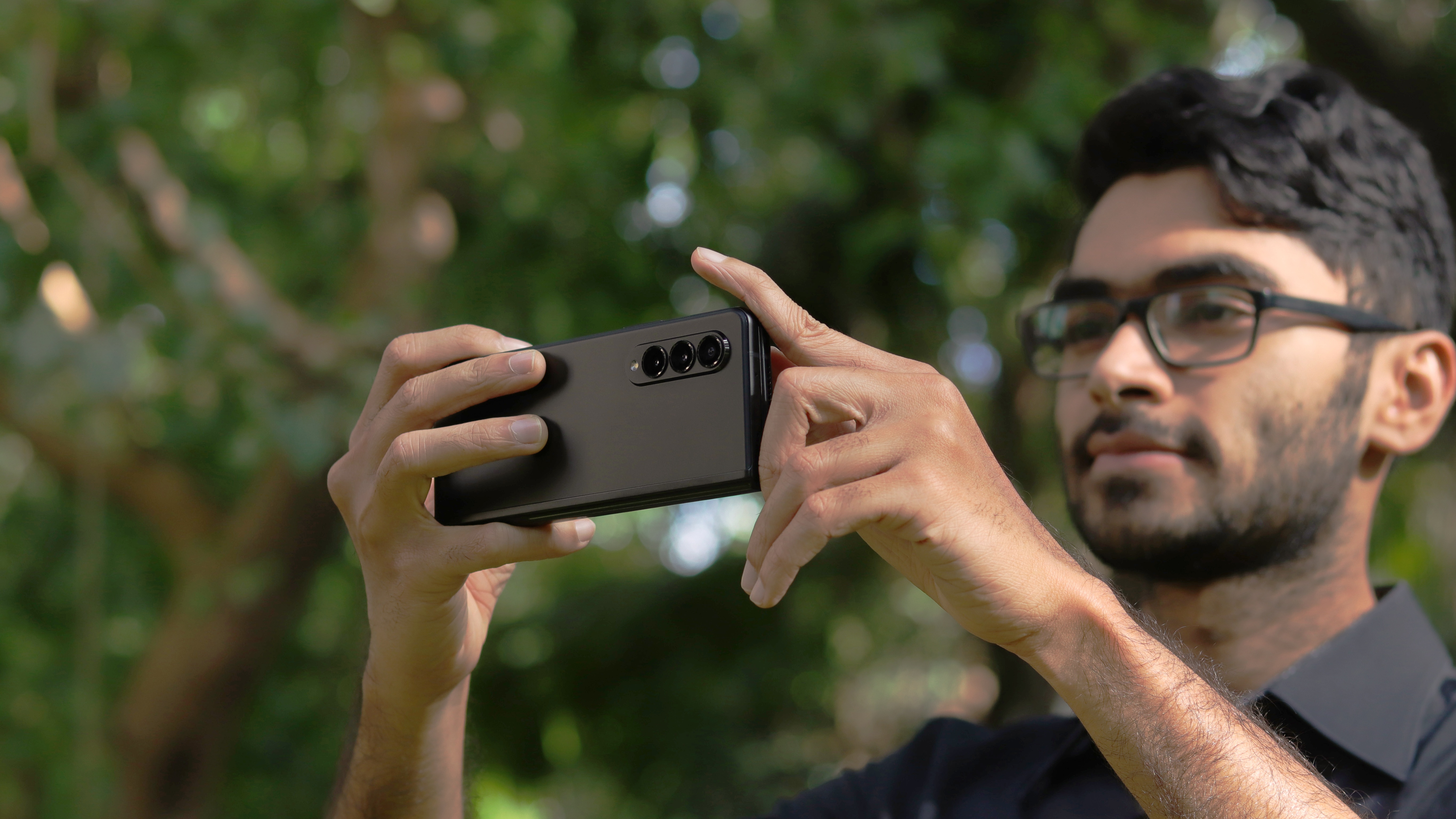
In an emerging yet sparsely populated foldable phone market, Samsung is the undisputed king. Its Galaxy Z Fold 3 is the most capable and fully rounded smartphone-tablet hybrid on the market, with Microsoft’s older, prototype-like Surface Duo not really able to compete in most regards.
It isn’t a complete whitewash, however. The Surface Duo has a more elegant and tactile design, and is significantly more affordable these days. There are elements of its dual-screen approach that we really like, too, especially when it comes to running two apps side by side.
But the Galaxy Z Fold 3 blitzes its opponent in most areas. It’s way more powerful, offers more fluid displays, is built a little tougher, and it has a much more capable camera system.
In addition, you also get 5G connectivity and wireless charging with the Samsung – neither of which are anywhere to be found on Microsoft’s foldable.
In a way, this doesn’t feel like a fair fight, and the real test will come when Microsoft launches its second-generation foldable. For now, however, Samsung is safely installed as the provisional king of the foldable format.
from TechRadar - All the latest technology news https://ift.tt/3m2ltsf

Post a Comment